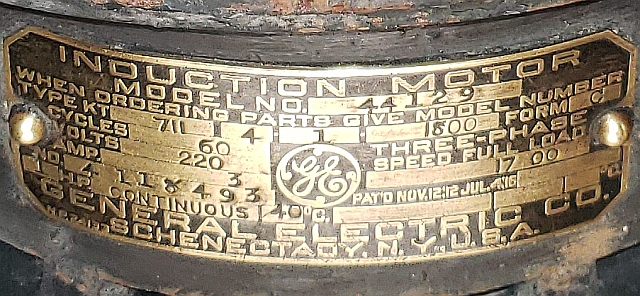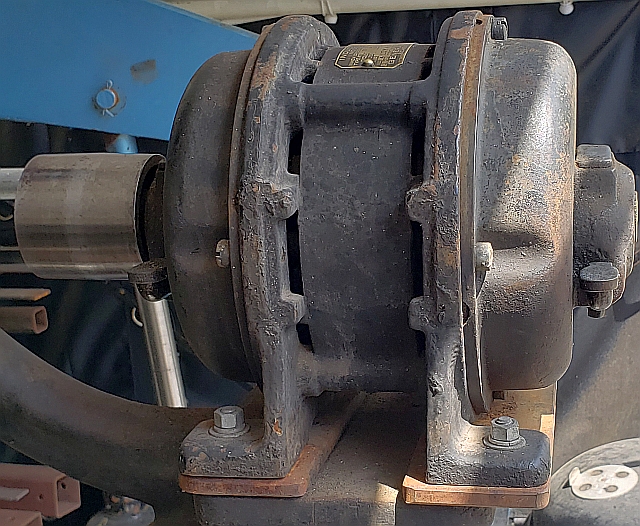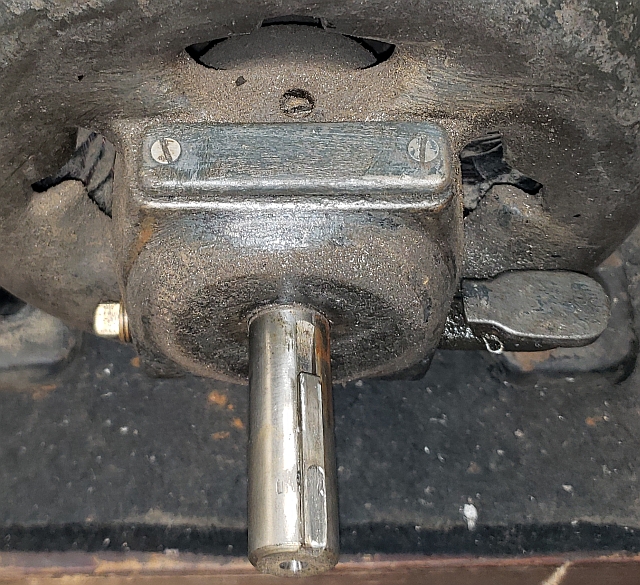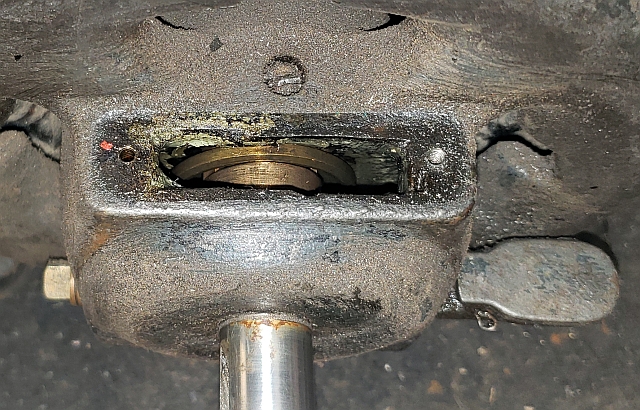metalmagpie
Titanium
- Joined
- May 22, 2006
- Location
- Seattle
Nameplate:

Note the patent date of Nov. 12, 1912.

This machine came to me on a camelback drill press. The story on it is that it came out of a warehouse in South Lake Union in Seattle. Ford built Model T cars in that warehouse. My best guess is that this drill press dates from that time, and that it largely sat unused since. So a drill press from the Model T era could well have a pretty old motor.
The presenting problem is that when it runs, there is a gentle rattling noise coming out of the bearing boxes at each end. The noise changes significantly when I push on the shaft with a 3M pad.
There is oil in the oil baths.

See the oil cup lid to the right of that picture. This is a picture of the oil bath bearing box on an end bonnet. Inside that bearing box is a sling ring which turns slowly in the direction of the shaft, carrying oil up above where it can work its way down to the sleeve bearing.

In the above image you can see the ring inside the bearing box.
This is a 3 phase 1hp induction motor (no repulsion start). It has plain bearings. I can feel no side movement of the shaft, nor end play either. I have taken apart and repaired dozens of 3 phase motors. But this kind may have some wrinkles I don't know about. Do you know of any article or video which discusses repair of such a motor?
Do you have any idea what would make a plain bearing motor softly rattle?
metalmagpie

Note the patent date of Nov. 12, 1912.

This machine came to me on a camelback drill press. The story on it is that it came out of a warehouse in South Lake Union in Seattle. Ford built Model T cars in that warehouse. My best guess is that this drill press dates from that time, and that it largely sat unused since. So a drill press from the Model T era could well have a pretty old motor.
The presenting problem is that when it runs, there is a gentle rattling noise coming out of the bearing boxes at each end. The noise changes significantly when I push on the shaft with a 3M pad.
There is oil in the oil baths.

See the oil cup lid to the right of that picture. This is a picture of the oil bath bearing box on an end bonnet. Inside that bearing box is a sling ring which turns slowly in the direction of the shaft, carrying oil up above where it can work its way down to the sleeve bearing.

In the above image you can see the ring inside the bearing box.
This is a 3 phase 1hp induction motor (no repulsion start). It has plain bearings. I can feel no side movement of the shaft, nor end play either. I have taken apart and repaired dozens of 3 phase motors. But this kind may have some wrinkles I don't know about. Do you know of any article or video which discusses repair of such a motor?
Do you have any idea what would make a plain bearing motor softly rattle?
metalmagpie




 , but I'm glad I did now.
, but I'm glad I did now.



